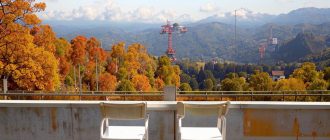
President of Pro-Vision, author of the Vinogradov.story community
“Rock art is considered one of the oldest art forms. The first drawings dating back to the Stone Age are found in many parts of the world and usually illustrate either domestic scenes or cultic subjects. Some petroglyphs and geoglyphs have tourist routes, while others were discovered recently – literally yesterday by the standards of history. I will tell you about the most interesting ones below.
Petroglyphs of Belomorsk and Onega Lake, Karelia
About 100 years ago in Karelia, near the town of Belomorsk, were discovered rock images, the age of which is believed to be from 4 to 5 thousand years. Petroglyphs of Belomorsk are made in the technique of engraving, covered with red ochre and depict people, animals, boats, hunting and fishing scenes. Some of them reach up to several meters in length.
But the most famous collection of Karelian images is located on the cape with the frightening name Besov Nos on Lake Onega. The cape got its name thanks to a petroglyph – a two-meter anthropomorphic “demon” discovered by Christian monks. However, the “demon” behaves peacefully and willingly lets not only research scientists, but also tourists.

Petroglyphs on Cape Besov Nos
Drawings in the caves of Sulawesi, Indonesia.
To date, the oldest rock art is recognized as a panorama of the hunt for Celibes pig, which was found in one of the karst caves on the Indonesian island of Sulawesi. According to scientists, this drawing is no less than 43,900 years old! However, for this region, the venerable age of rock art is a rule rather than something outstanding. To argue with the Indonesian drawings for the right to be called the oldest in the world can only Australian, also devoted to hunting. But the era is the same, plus or minus.

Drawing in a cave in Sulawesi
Petroglyphs Cholpon-Ata, Kyrgyzstan
Not far from Issyk-Kul there is one of the most mysterious and mysterious places in Kyrgyzstan – Cholpon-Ata tract. Locals call it the Stone Garden. Well, outside the country it is known under a less romantic, but much more intriguing name – Cholpon-Ata petroglyphs. Nobody can say exactly how and when thousands of boulders with mysterious carved drawings appeared on a huge territory of 4 hectares. Most likely, they were carried by glaciers and mudflows from the mountain gorges of the Kyungöy-Ala-Too range, where ancient man’s camps were located.
This is also indicated by the subjects of the rock images – they are mainly domestic hunting scenes and drawings of animals: deer, ibexes and snow leopards. The later petroglyphs clearly show camel caravans with drivers – an obvious sign of the Great Silk Road. Most of the boulders are turned to the south-east and south-west, and therefore scientists link their origin with religious rites. The cult status is also indicated by the unusual shapes of the stones: among the boulders there are cromlechs, tombstones and balbalas – stone sculptures with portraits of ancestors. According to an alternative version, the Stone Garden is also a huge ancient observatory created for observing the celestial luminaries.
Realistic images in Chauvet, France
Unlike Asian rock art, European rock art does not boast an outstanding history: the earliest images on the continent are only 25-30 thousand years old. But later European drawings are characterized by stunning realism. One of the outstanding works of ancient fine art “exhibited” in the Chauvet Cave in France: these are again images of animals, but no longer schematic, but quite figurative. A herd of horses, bulls and rhinoceroses – all of them are easily recognizable without reading the information plates. Moreover, when looking at Chauvet’s drawings, one gets the impression that the unknown artist was not just documenting everyday life, but was deliberately honing his skills: horse heads, one of the classic images of painting, were getting better and better with each new attempt.

Rock paintings in the Chauvet Cave
Rock paintings of Gobustan, Azerbaijan
It is easy to trace the “evolution” of rock art subjects on the drawings, of which there are no less than 6 thousand in Gobustan. Everything starts with hunting and fishing scenes, then dancing people and round dances appear, and even later – tools of labor (sickle and flat-bottomed boat) and calligraphy. With the passage of time the drawings become smaller but more complex. They were carved with river pebbles on soft limestone, which was not difficult but interesting. Perhaps that is why among the “serious” subjects there are also ironic ones – for example, “autographs” of ancient authors.

Petroglyphs in Gobustan






